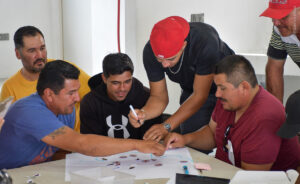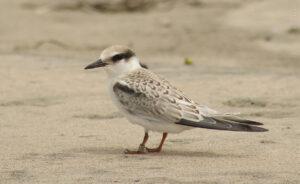Every year, millions of migratory birds travel along the Pacific coast in search of shelter and food, with extensive routes of up to 16,000 kilometers that begin in cold North America and end in the warm regions of the southern cone. Many of these species take advantage of the coasts and wetlands of northwestern Mexico as a temporary habitat, which is why our region is essential in their life cycle.
That is why at Pronatura Noroeste we conduct monitoring and follow-up tasks for this spectacular migratory event in coordination with organizations from Mexico, Canada, and the United States of America. Because it is a phenomenon that involves these three countries, there is a transnational alliance that, among other things, includes the monitoring of flocks of birds through a network of MOTUS stations.
This environmental conservation work is highly relevant for the study and protection of these species. In fact, at a global level, migratory shorebirds are considered among the most vulnerable on the planet since they face threats such as habitat loss, urban sprawl, and climate change. It is estimated that the population of migratory shorebirds has declined by 37% globally in the last 50 years.
At Pronatura Noroeste we consider it a priority to learn more and better about these emblematic animals, for which it is necessary to take advantage of technology and applied science. The MOTUS stations work through the information captured through antennas, thanks to the installation of small transmitters of 0.45 grams on the legs of some migrating specimens. These accessories do not obstruct the bird’s daily life since they weigh less than 1% of the total weight of the bird. They work with solar energy and emit a radio pulse every five seconds that is captured 24 hours a day by the MOTUS stations installed along the so-called Pacific Migration Corridor.
The signals, along with the position and route used by the birds, are recorded in a computer system that our researchers and other organizations in North America read and analyze to know the destination of these birds when they arrive and leave our coasts and wetlands.
















